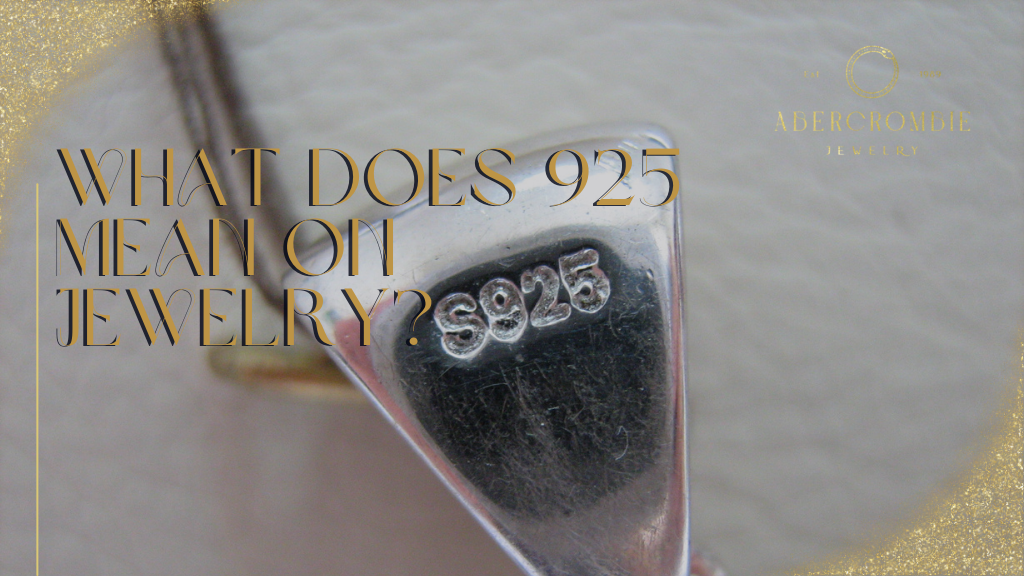- What is 925 on jewelry?
- Why is 925 important in jewelry?
- How to identify genuine 925 silver jewelry?
- What types of jewelry are commonly made with 925 silver?
- How to care for 925 silver jewelry?
- Differences between 925 silver and other metals?
- How does 925 silver react over time?
- Where is 925 silver jewelry most commonly produced?
- FAQs
Sterling silver, often overshadowed by the charmof gold and the modern appeal of platinum, holds its ground with a timeless elegance and versatility unmatched by its metallic peers. Its unique blend, denoted by the 925 stamp, offers a perfect balance of beauty and practicality. This hallmark of quality not only signifies the material’s purity—92.5% silver mixed with 7.5% other metals, typically copper—but also its suitability for a wide array of jewelry designs, from the understated to the ornate.
This distinctive composition of sterling silver sets it apart in the jewelry world, providing a durable yet malleable canvas for artisans. Whether it’s the classic allure of a simple chain necklace, the personal touch of a charm bracelet, or the statement made by a bold ring, sterling silver’s appeal lies in its ability to cater to every taste and occasion. Single pieces often become cherished keepsakes, while collections can showcase the range of creativity and craftsmanship that 925 silver allows.
Examining further into the nuances of sterling silver, one discovers the specific characteristics that make each piece unique. From the methods of crafting and finishing to the historical contexts that have shaped its use in jewelry making, sterling silver offers a depth of exploration. This includes understanding how to care for and preserve its luster over time, from regular cleaning to proper storage, ensuring that each piece remains a treasured part of one’s collection.
The following sections will dive into these elements, enriching the appreciation for what makes sterling silver, marked by the 925 stamp, a beloved choice among jewelry enthusiasts worldwide.
What is 925 on jewelry?
When you encounter 925 on a piece of jewelry, it signifies more than just a number. It’s a hallmark indicating that the jewelry is crafted from sterling silver, a material composed of 92.5% pure silver and 7.5% other metals, usually copper. This specific composition is what gives sterling silver its notable strength and durability, making it an ideal choice for jewelry that’s both beautiful and built to last.
The 925 stamp is essentially a badge of authenticity and quality, reassuring you that the piece adheres to the sterling silver standard. For jewelry enthusiasts and buyers, recognizing this stamp is crucial—it’s the key to ensuring you’re investing in a piece that not only looks appealing but also possesses the inherent value and longevity associated with sterling silver. This understanding is fundamental in distinguishing genuine sterling silver from other materials that might mimic its appearance but fall short in quality and durability.
Why is 925 important in jewelry?
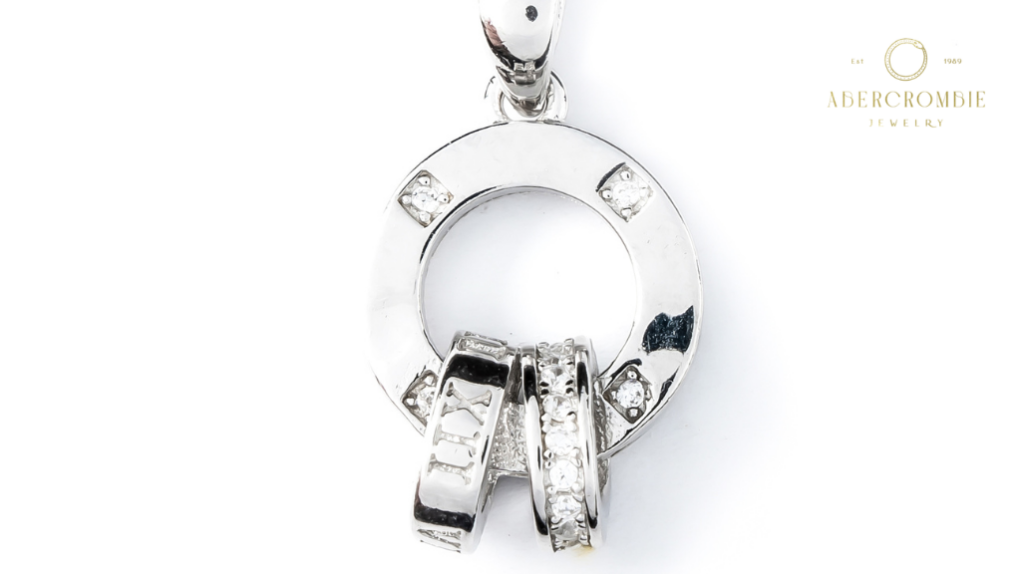
The 925 stamp found on jewelry pieces is more than just a mark; it’s a hallmark of quality and purity in silver jewelry. This designation indicates that the item is crafted from sterling silver, consisting of 92.5% pure silver, a detail that balances the metal’s innate luster with the necessary resilience for everyday wear. For those looking to purchase jewelry, the 925 stamp serves as a crucial indicator of authenticity and value.
It’s a guarantee that the piece in question adheres to the high standards associated with sterling silver, offering both the beauty of silver and the durability required for long-term use. In a market where the true composition of a piece can be obscured, this stamp provides a clear, reliable method to identify genuine sterling silver. Understanding the significance of 925 is vital for anyone interested in acquiring quality silver jewelry, making it a key piece of knowledge for discerning buyers.
Indicates silver purity of 92.5%
The presence of the 925 stamp on jewelry signifies more than just a number—it’s a testament to the metal’s purity, indicating that the material comprises 92.5% pure silver. This level of purity is the hallmark of sterling silver, setting it apart from pure silver and other silver alloys. The specific percentage ensures that the jewelry strikes an ideal balance between luster, malleability, and durability, making it a preferred choice for both jewelers and consumers alike.
Assures quality and value for buyers
For those looking to purchase jewelry, the 925 stamp acts as a beacon of assurance. It guarantees that the piece in question is crafted from high-quality sterling silver, adhering to strict purity standards. This mark of quality is not merely about the item’s immediate appeal or its wearability but also concerns its enduring value.
Owning jewelry with this stamp means investing in something that offers both aesthetic beauty and lasting durability, making it a valuable addition to any collection.
How to identify genuine 925 silver jewelry?
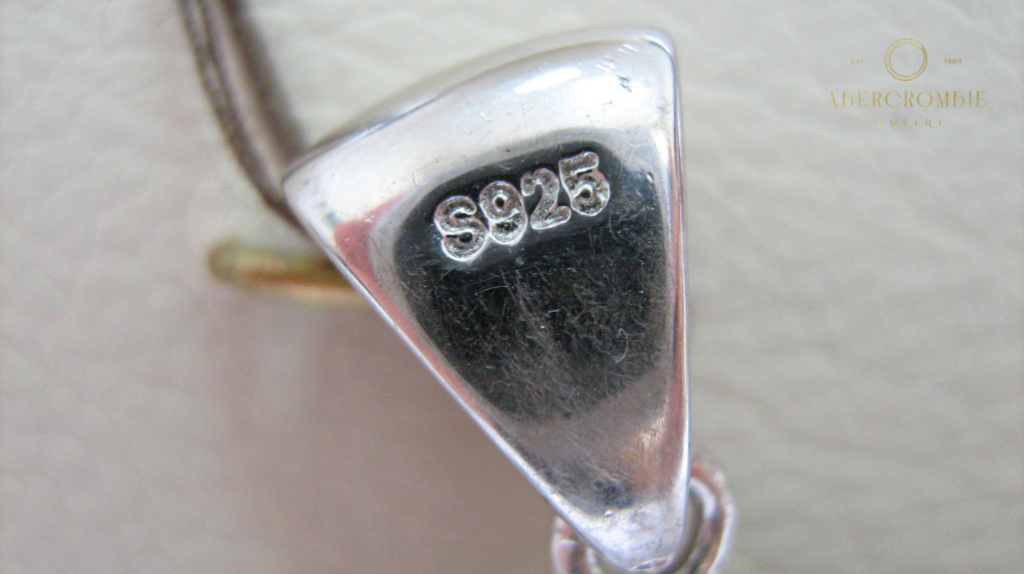
Identifying genuine 925 silver jewelry is crucial for anyone aiming to add authentic pieces to their collection. The most reliable method is to look for the 925 stamp on the jewelry. This hallmark, signifying that the piece is made of 92.5% silver, is a clear indicator of sterling silver.
However, it’s important to note that some genuine pieces, especially older or handcrafted items, might not bear this stamp due to various reasons. In instances where the 925 stamp is absent, turning to authenticity certificates or hallmarks provided by reputable sellers becomes essential. These documents or additional marks serve as a solid proof of the jewelry’s composition and quality, offering buyers an extra layer of confidence.
By familiarizing oneself with these identification techniques, discerning the authenticity of silver jewelry becomes a more straightforward and reliable process.
Look for the 925 stamp on the piece
Identifying genuine sterling silver begins with checking for the 925 stamp. This hallmark signifies that the jewelry is composed of 92.5% pure silver, making it a reliable indicator of sterling silver’s authenticity. Always inspect the piece for this stamp as your first step in authentication, as it directly reflects adherence to the high standards of silver purity.
Check for authenticity certificates or hallmarks
When the 925 stamp is not visible or if you’re seeking additional confirmation of the jewelry’s quality, look for authenticity certificates or hallmarks. These are provided by reputable sellers and craftsmen to certify the silver content and the piece’s origin. Such documentation or marks serve as a solid proof of authenticity, offering buyers peace of mind about the value and genuineness of their silver jewelry.
What types of jewelry are commonly made with 925 silver?
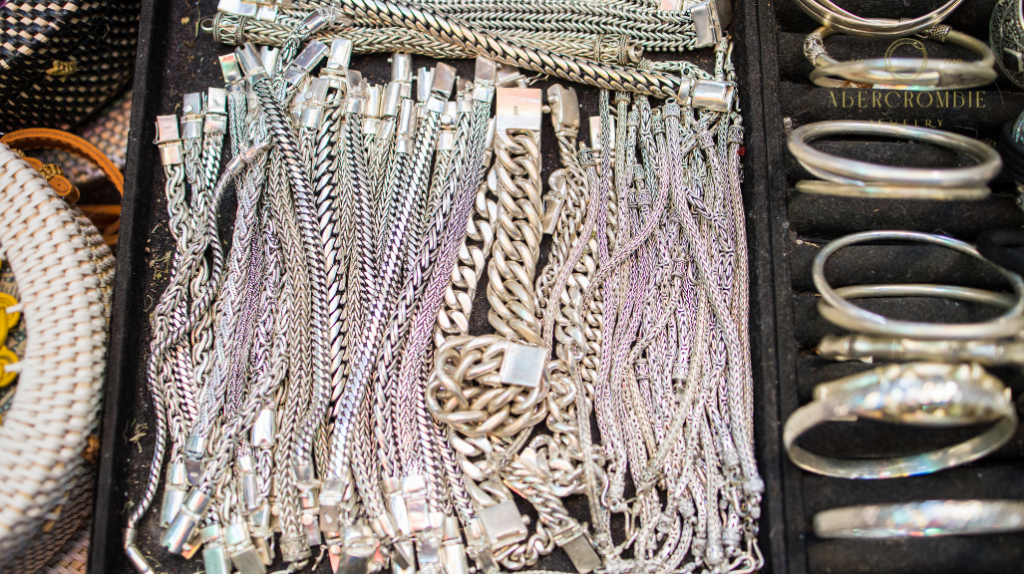
Sterling silver, marked by its 925 stamp, is celebrated for its versatility and beauty, making it a preferred material for a broad range of jewelry types. Among the most cherished are rings, which include everything from simple, elegant bands to more elaborate engagement and statement rings, highlighting sterling silver’s ability to adapt to various styles and preferences. Necklaces, from sleek chains to ornate pendants, offer diverse ways to wear 925 silver, catering to different tastes and occasions.
Bracelets, such as classic bangles and customizable charm bracelets, allow for personal expression and creativity. Additionally, earrings in 925 silver span a wide array, from understated studs perfect for everyday wear to dramatic chandelier earrings that make a statement. Each type of jewelry showcases the unique properties of 925 silver, underscoring its enduring popularity and appeal in the world of adornment.
Rings, including engagement and statement rings
Rings crafted from 925 silver span a wide array, encompassing both the profound commitment symbolized by engagement rings and the personal expression found in statement rings. The inherent strength and beauty of 925 silver make it an excellent material for rings that are meant to be both durable and striking, embodying moments of love or individual flair.
Necklaces, from simple chains to elaborate pendants
From the elegant simplicity of simple chains to the intricate beauty of elaborate pendants, 925 silver necklaces offer versatility and style. The luster of 925 silver enhances the allure of these pieces, making them a staple in jewelry collections for their ability to complement any look, whether casual or formal.
Bracelets, including bangles and charm bracelets
925 silver bracelets provide a canvas for creativity, ranging from the sleek elegance of bangles to the personalized touch of charm bracelets. These pieces allow wearers to mix and match, creating a look that’s uniquely theirs, all while enjoying the timeless appeal and quality of 925 silver.
Earrings, from studs to elaborate chandelier designs
Earrings made from 925 silver cater to all preferences, offering the understated elegance of studs for everyday elegance and the dramatic flair of chandelier designs for special occasions. The reflective quality of 925 silver ensures these earrings not only enhance the wearer’s appearance but also stand out as works of art in their own right.
How to care for 925 silver jewelry?

Caring for 925 silver jewelry is key to ensuring its beauty and durability over time. One of the simplest, yet most effective ways to maintain its shine is through regular cleaning with a soft cloth. This gentle approach helps remove tarnish and maintain the metal’s gleaming surface.
To prevent tarnish in the first place, it’s crucial to store your jewelry in a cool, dry place, away from moisture and direct sunlight that can accelerate oxidation. Furthermore, avoiding exposure to harsh chemicals and chlorine will protect the silver from potential damage. By adhering to these care tips, your 925 silver jewelry will continue to sparkle and hold its value for years to come.
Regular cleaning with a soft cloth
Regular cleaning with a soft cloth is essential for keeping 925 silver jewelry in pristine condition. This method gently removes tarnish and prevents the accumulation of grime, ensuring the silver’s luster remains vibrant. It’s a straightforward yet critical practice for anyone looking to maintain the beauty of their silver jewelry.
Proper storage in a cool, dry place
To preserve the integrity of 925 silver jewelry, proper storage in a cool, dry place is key. This precaution helps protect the silver from the adverse effects of moisture and environmental exposure, which can lead to tarnishing. Using anti-tarnish bags or a lined jewelry box can offer additional protection, keeping your silver pieces safe and shining.
Avoiding harsh chemicals and chlorine
Avoiding harsh chemicals and chlorine is crucial for the care of 925 silver jewelry. These substances can corrode the silver, causing irreversible damage and dulling its natural shine. By removing your jewelry before swimming in chlorinated pools or using cleaning products, you can significantly extend the life and beauty of your silver items.
Differences between 925 silver and other metals?

Understanding the distinctions between 925 silver and other popular metals is key for anyone navigating the jewelry market. 925 silver, marked by its 92.5% silver content, stands out for its balance of beauty and practicality. The addition of other metals, typically copper, enhances its durability, making it ideal for everyday wear while maintaining the lustrous appeal of silver.
Contrastingly, pure silver is softer and more susceptible to damage, which limits its use in jewelry that’s worn frequently. White gold, another sought-after material, offers durability and a unique color but requires rhodium plating to preserve its shine and comes with a higher price tag. Stainless steel presents a cost-effective alternative, prized for its strength and resistance to tarnishing, though it lacks the precious metal status of silver and gold.
Each of these metals has its own set of characteristics, influencing a buyer’s choice based on factors like durability, cost, and aesthetic preference.
925 silver vs. pure silver
925 silver stands out from pure silver primarily due to its composition and practicality for jewelry. While 925 silver contains 92.5% silver, mixed with metals like copper to enhance durability, pure silver boasts a 99.9% silver content, making it softer and more susceptible to wear. This distinction makes 925 silver more suitable for items meant for daily use, offering a balance between the beauty of silver and the resilience required for longevity.
925 silver vs. white gold
When comparing 925 silver to white gold, the contrast lies in their durability, cost, and maintenance needs. 925 silver is celebrated for its affordability and high luster, though it demands regular care to prevent tarnishing. White gold, an alloy of gold and white metals coated in rhodium, offers greater resistance to wear and maintains its shine without tarnishing but at a higher price point.
Additionally, white gold may require re-plating to preserve its bright white finish, adding to its upkeep.
925 silver vs. stainless steel
The choice between 925 silver and stainless steel often hinges on aesthetic preference and budget. 925 silver provides the timeless appeal of a precious metal, favored for its traditional luster and warmth, albeit with some vulnerability to tarnish. Stainless steel, characterized by its exceptional durability and minimal maintenance, presents a modern, industrial look at a more accessible price.
While less traditional for jewelry, stainless steel’s robustness makes it a popular choice for fashion-forward and utilitarian designs.
How does 925 silver react over time?
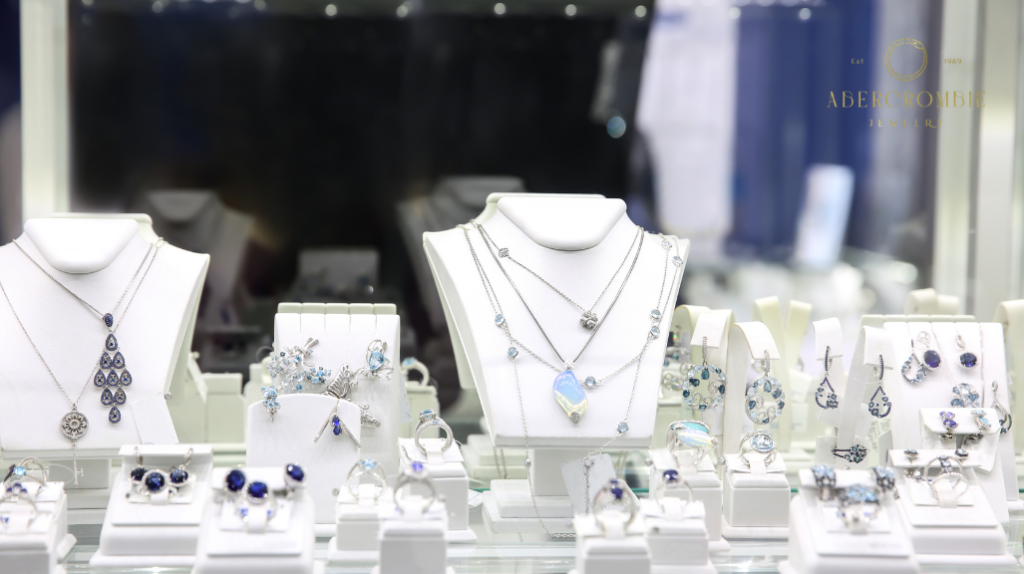
Over the years, 925 silver experiences a natural phenomenon known as tarnishing, where the metal gradually darkens due to a chemical reaction with sulfur-containing substances in the air, resulting in the formation of silver sulfide on its surface. Although tarnishing is a common occurrence for sterling silver, it’s important to note that it doesn’t compromise the metal’s inherent value or quality. The good news is that tarnishing is reversible; the original shine and luster of 925 silver can be effectively restored with the right cleaning and polishing methods.
Engaging in regular care and maintenance not only helps preserve the aesthetic appeal of the silver but also enhances its durability, ensuring that pieces made from 925 silver continue to be cherished elements of jewelry collections for generations.
Tarnishing and how to prevent it
Tarnishing is an inevitable aspect of owning 925 silver jewelry, characterized by a gradual darkening as the metal reacts with sulfur compounds in the environment, forming silver sulfide on its surface. To mitigate tarnishing, it’s advisable to store your silver pieces in airtight containers or special anti-tarnish bags that protect them from exposure to the air. Regular wear can also naturally polish the silver, delaying tarnish.
Moreover, avoiding contact with harsh chemicals and chlorinated water can significantly reduce the likelihood of tarnishing.
Polishing techniques to restore shine
To rejuvenate tarnished 925 silver and bring back its original luster, various polishing techniques can be employed. For light tarnish, gently rubbing the silver with a soft, lint-free cloth can often restore its shine. For more severe cases, using a silver polish or a homemade solution of baking soda and water applied with a soft cloth, followed by thorough rinsing and drying, can effectively remove tarnish.
It’s crucial to polish silver gently to prevent any scratches that could mar its surface. Regular application of these techniques, alongside attentive care, ensures that 925 silver jewelry maintains its gleaming beauty over time.
Where is 925 silver jewelry most commonly produced?
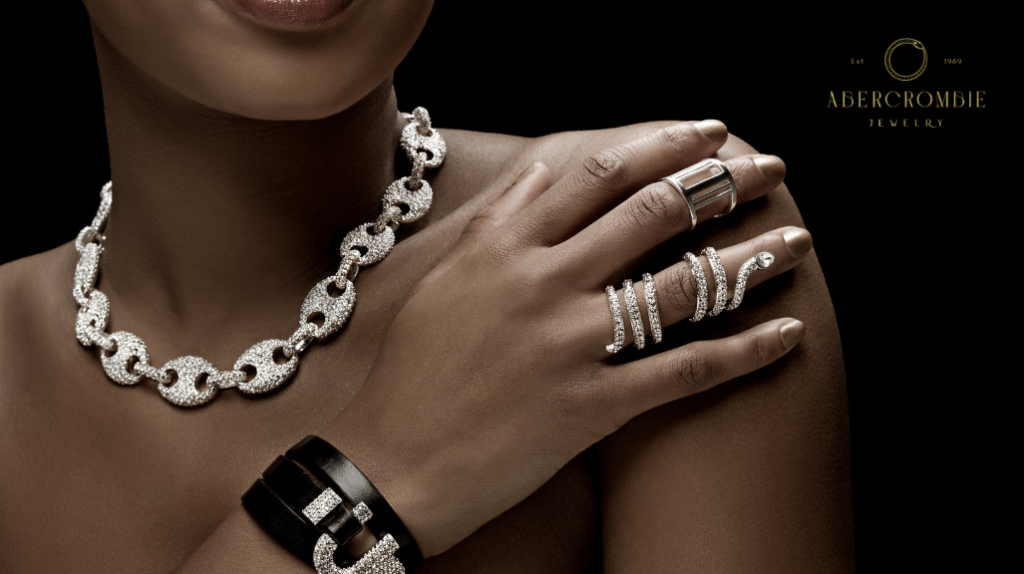
925 silver jewelry finds its origins in various corners of the globe, each with its own hallmark of excellence and style. Italy is celebrated for its superior silver craftsmanship, offering pieces that epitomize elegance and high quality, thus positioning itself as a cornerstone in the international silver jewelry market. Thailand follows, known for its detailed and intricate designs that marry traditional craftsmanship with contemporary aesthetics, providing exquisite silver jewelry at accessible prices.
Mexico contributes with its vibrant and rich history of silver mining, producing unique and bold designs that mirror the nation’s cultural depth. These key regions not only dominate the production of 925 silver jewelry but also set the pace for global trends and standards in the craft of jewelry making.
Italy, known for high-quality silver craftsmanship
Italy is revered for its high-quality silver craftsmanship, a testament to its long-standing heritage in the art of jewelry making. Italian silver artisans combine meticulous attention to detail with innovative design, resulting in jewelry that is both elegant and contemporary. The excellence of Italian silver craftsmanship is recognized worldwide, making pieces from this region coveted for their beauty and quality.
Thailand, offering unique designs and affordability
Thailand stands out in the silver jewelry market for its unique designs coupled with affordability. Thai artisans excel in weaving traditional patterns and techniques into their work, offering an extensive range of styles that cater to diverse tastes. From intricate and delicate to bold and contemporary, Thai silver jewelry represents a perfect marriage of uniqueness and economic value, appealing to those in search of distinctive pieces without a high price tag.
Mexico, with a rich history of silver mining and jewelry making
Mexico boasts a rich history of silver mining and jewelry making, with its traditions rooted deeply in the past. The silver jewelry from Mexico is characterized by its bold, intricate designs that reflect the nation’s cultural heritage. The craftsmanship’s depth and the historical significance of silver in Mexican culture imbue the jewelry with a unique value, attracting those who seek pieces with character and a storied background.

